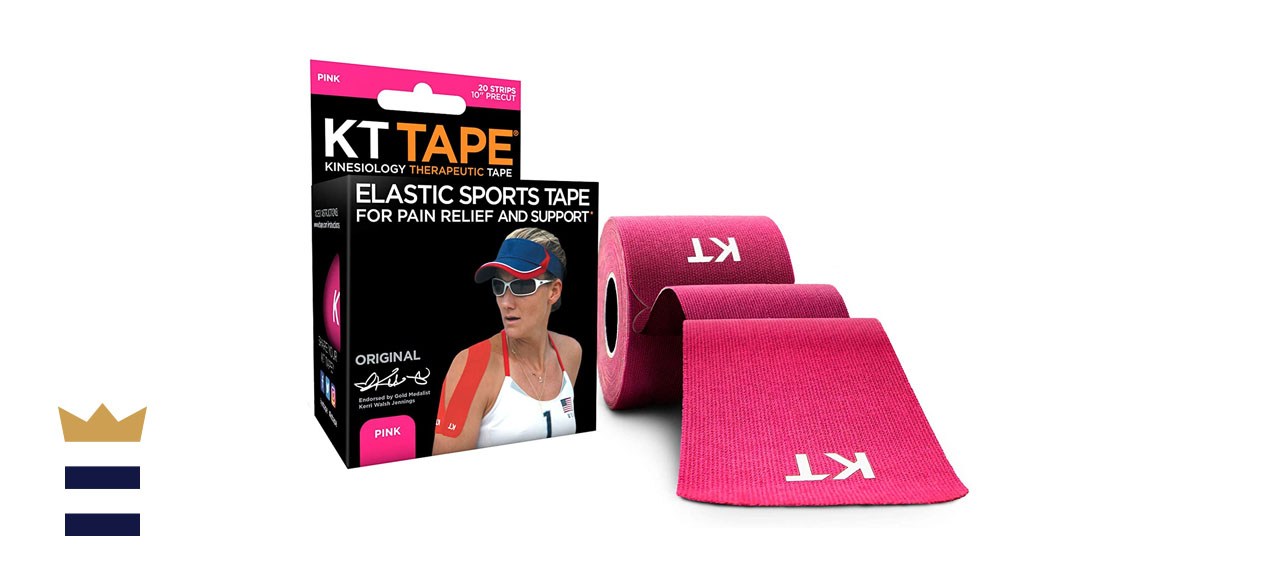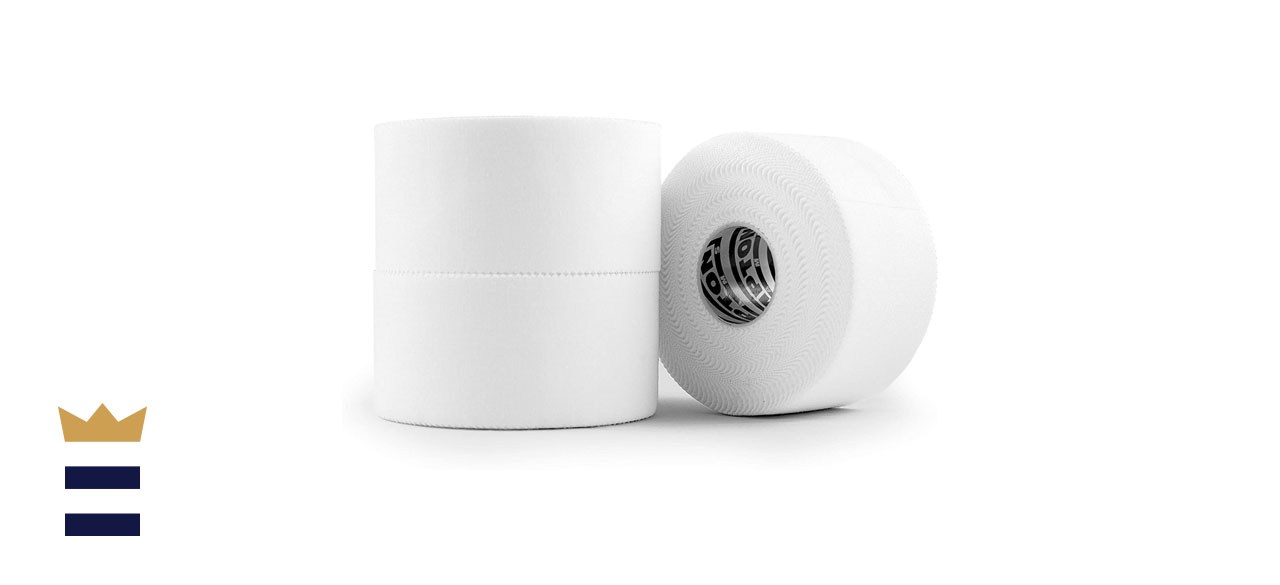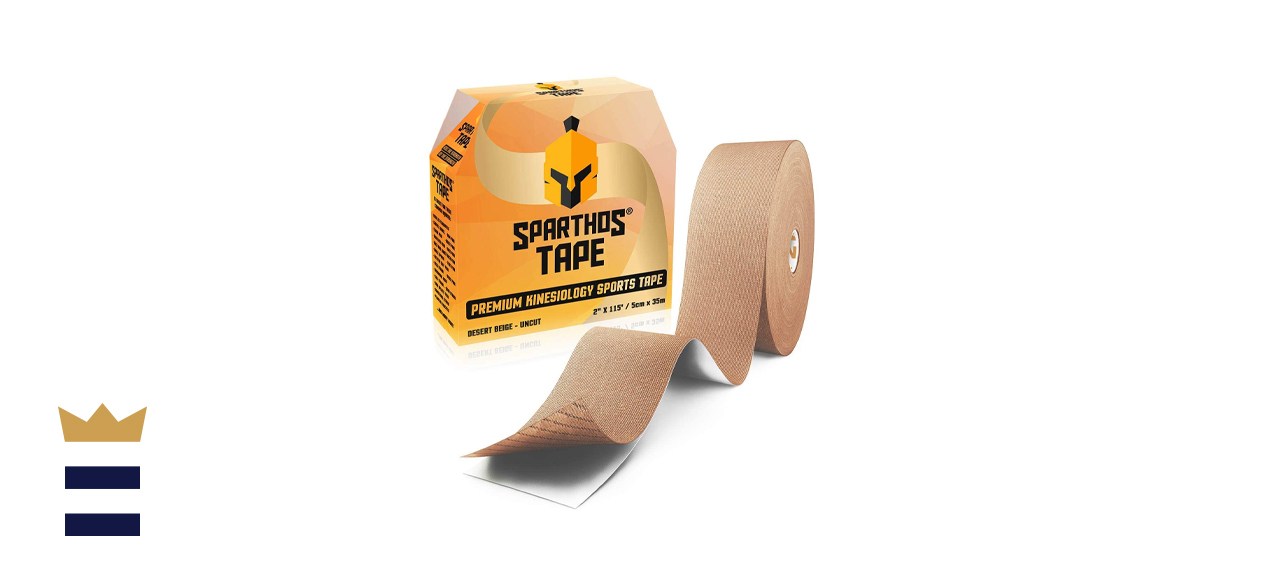What athletic tape is the best?
Designed to add support and provide protection for your body, athletic tape and wraps are not just for professional athletes. Anyone who routinely exercises, hikes, climbs, participates in recreational sports leagues or is focusing on their training can benefit from athletic tape.
Many athletes prefer using athletic tape rather than a brace because tape doesn’t hinder performance or feel overly bulky. The KT Tape Original Cotton Elastic Kinesiology Therapeutic Sports Tape is ideal for those needing a durable, supportive option.
What to know before you buy athletic tape
Athletic tape uses
You can use athletic tape for multiple reasons, and depending on your needs, you may choose traditional tape or kinesiology tape. Some common uses for athletic tape include joint and muscle support; stabilization of ankles and knees; supporting injured or strained areas; relieving pain; reducing muscle fatigue and overuse; and preventing injury.
Traditional vs. kinesiology tape
The most traditional forms of athletic tape provide support to injured areas and in some cases, immobilize those areas to promote faster healing. You might apply traditional athletic tape as a preventive measure to high-impact areas or previously injured muscles and joints.
Many people involved in contact sports use a more rigid athletic tape. This style usually is intended for a single use and is discarded and reapplied as needed. It is recommended to use a pre-wrap before application.
Kinesiology tape has superior flexibility and won’t drastically reduce range of motion. While still providing support and pressure to injured or swollen areas, this type of tape, also referred to as KT tape, can improve circulation and help reduce inflammation. You usually apply kinesiology tape directly to the skin and wear it for multiple days at a time.
Pre-wrap
Traditional athletic tape is best used in combination with a pre-wrap. Constructed from a thin, flexible material, pre-wraps provide barriers between your skin and the tape adhesive, which helps reduce irritation and slippage.
What to look for in quality athletic tape
Materials
Focus on the tape’s material and adhesive. Traditional tape is primarily made of cotton, while kinesiology tape occasionally is made of water-resistant synthetic blends. If you have allergies or skin sensitivity, there are adhesives that won’t cause an allergic reaction or irritation.
Color and design
The most common color for athletic tape is white. Kinesiology tape has a much wider array of colors and designs, which can come in handy when you want to use tape that matches your team’s logo or specific color pattern.
Removal method
If your athletic tape requires scissors to make a precise cut, avoid trying to rip it by hand, which may make it fray or come apart. Other athletic tapes might be pre-cut or easy to rip. Individual pre-cut designs usually are best used on specific parts of the body because they provide optimal support to these areas.
How much you can expect to spend on athletic tape
Its price doesn’t vary too much, with most kinds costing $10-$20.
Athletic tape FAQ
Can you use athletic tape to help prevent blisters?
A. Yes, anyone susceptible to blisters can apply athletic tape to hot spots to prevent new blisters from forming. Kinesiology tape often is better at preventing blisters than traditional tape due to its direct-to-skin application and flexible design.
Can you leave kinesiology tape on overnight?
A. Yes. KT tape is made to stay in place up to four or five days on average. This means you can sleep with it on or even shower without it coming undone or losing its adhesive properties.
Should you use athletic tape or a brace?
A. Athletic tape is best used to support minor injuries or for injury prevention, while you would use a brace for chronic or longer-lasting injuries. Braces provide the most support for an injured knee, ankle, wrist, etc., but can have a major effect on mobility.
What’s the best athletic tape to buy?
Top athletic tape
KT Tape Original Cotton Elastic Kinesiology Therapeutic Sports Tape
What you need to know: This flexible, supportive cotton tape is designed for use by all types of athletes.
What you’ll love: Olympic athletes commonly use this brand of athletic tape. Sweat or water won’t affect it. It also has a moisture-wicking design and comes in eight colors.
What you should consider: It’s more expensive per roll than other options.
Where to buy: Sold by Amazon
Top athletic tape for the money
Hampton Adams White Athletic Sports Tape
What you need to know: Medical trainers and athletes trust this brand, and you can use it in a variety of situations.
What you’ll love: The adhesive doesn’t leave sticky or hard-to-remove residue. It provides premium wrist and ankle support, and you can rip it by hand.
What you should consider: It may not work as well when used in smaller strips.
Where to buy: Sold by Amazon
Worth checking out
Sparthos Tape Kinesiology Tape
What you need to know: Those looking for specific colors or designs as well as a convenient application guide will appreciate this tape.
What you’ll love: Used to reduce overall injury time and hasten recovery, it’s designed to stay in place even during the hardest workouts or games. If you aren’t pleased with the results, there is a no-risk guarantee.
What you should consider: A few users reported having a skin reaction when using it.
Where to buy: Sold by Amazon
Want to shop the best products at the best prices? Check out Daily Deals from BestReviews.
Sign up here to receive the BestReviews weekly newsletter for useful advice on new products and noteworthy deals.
Matthew Young writes for BestReviews. BestReviews has helped millions of consumers simplify their purchasing decisions, saving them time and money.
Copyright 2023 BestReviews, a Nexstar company. All rights reserved.















